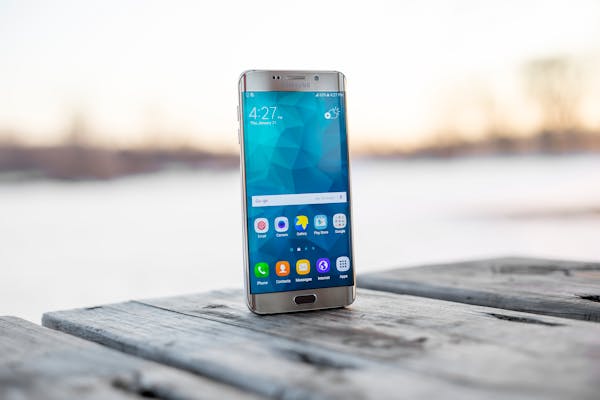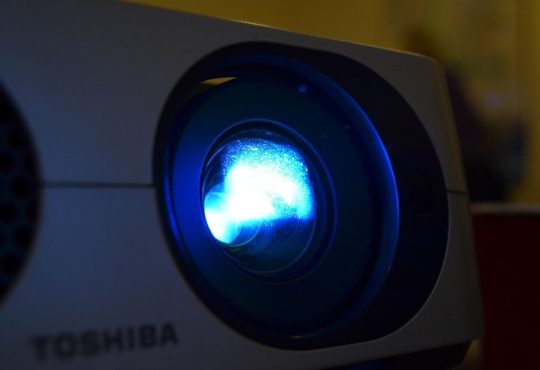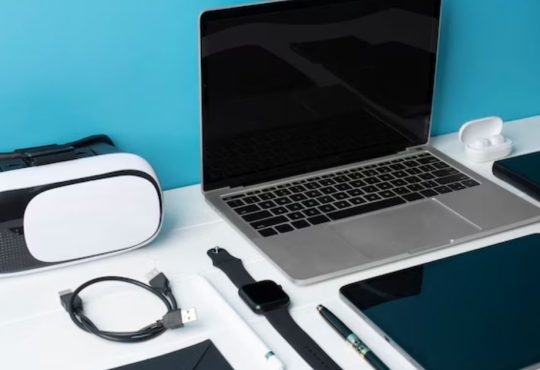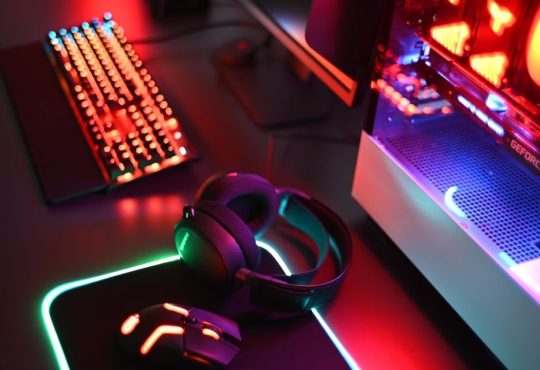Smartphones have come a long way since their inception. What started as bulky devices for making calls has evolved into pocket-sized supercomputers capable of handling everything from high-definition photography to complex gaming and even artificial intelligence (AI) tasks. Today, smartphones are indispensable tools for communication, work, entertainment, and everything in between. The rapid development of mobile technology has made the market highly competitive, with brands constantly innovating to stay ahead. This guide not only traces the evolution of smartphones but also highlights the Top 10 Smartphones to Buy.

The Evolution of Smartphones
The history of smartphones can be divided into several key phases:
- The Early Days (1992–2006): The first “smartphone” was IBM’s Simon, released in 1992. It had basic features like email and a touchscreen, which were revolutionary at the time. However, smartphones didn’t gain mainstream appeal until the early 2000s with devices like the BlackBerry, which introduced the idea of mobile email on the go.
- The iPhone Era (2007–2010): In 2007, Apple unveiled the first iPhone, which transformed the smartphone industry. With its sleek design, touchscreen interface, and access to apps via the App Store, the iPhone set the standard for future smartphones. Android followed closely behind with the launch of the T-Mobile G1 in 2008, creating a powerful alternative to Apple’s iOS.
- Rise of Android and Multicore Processors (2011–2015): By 2011, Android had become the dominant mobile operating system. Smartphones started featuring multicore processors, enabling smoother multitasking and improved gaming performance. Samsung, HTC, and other manufacturers contributed to Android’s rise, each introducing innovations in display technology, battery life, and camera quality.
- The Age of AI, 5G, and Foldables (2016–2024): From 2016 onward, smartphones have incorporated AI features like Google Assistant and Siri, along with improving photography through computational photography. In 2019, the first foldable phones hit the market, and by 2024, 5G connectivity has become the norm, offering superfast internet speeds and seamless video streaming.
Key Smartphone Features to Consider
With dozens of smartphones released each year, picking the right one can be overwhelming. Here are some crucial aspects to consider before buying your next smartphone:
1. Performance and Processing Power
Smartphone processors have reached a point where even mid-tier devices can handle most tasks with ease. Flagship devices, however, come equipped with cutting-edge chips like Apple’s A17 Bionic or Qualcomm’s Snapdragon 8 Gen 3. These processors ensure smooth multitasking, faster app launch times, and superior gaming performance. More cores in the processor, along with advanced GPU capabilities, mean modern smartphones can handle intensive tasks like 4K video editing and gaming at high frame rates.
2. Camera Quality
Smartphone photography has become one of the most significant aspects of smartphone design. Smartphone cameras have evolved into multi-lens systems that combine wide, ultra-wide, telephoto, and macro lenses. Features like optical image stabilization (OIS), night mode, and 8K video recording have become standard in premium models. Additionally, AI-assisted photography enables smartphones to automatically optimize settings based on lighting, subject, and environment, making it easier for users to capture stunning photos with minimal effort.
3. Display Technology
The display is the centerpiece of a smartphone experience. most flagship devices feature OLED or AMOLED displays, which offer deeper blacks, higher contrast ratios, and richer colors compared to older LCD technology. Many smartphones now come with high refresh rates, ranging from 90Hz to 165Hz, providing smoother scrolling, better gaming visuals, and an overall more fluid user experience. Resolutions have also reached Quad HD+ and even 4K in some models, ensuring unparalleled clarity for watching movies, playing games, or simply browsing the web.
4. Battery Life and Charging Speeds
Battery life remains a critical concern for smartphone users. Even the most feature-packed phones can be frustrating if they don’t last throughout the day. battery capacities typically range from 4000mAh to 6000mAh, ensuring that most devices can last a full day under moderate to heavy use. Coupled with fast-charging technology, such as 100W or even 120W chargers, users can recharge their phones to full capacity in less than 30 minutes, minimizing downtime.
5. Operating System: iOS vs. Android
While hardware plays a significant role, the user experience is heavily dependent on the operating system. Apple’s iOS and Google’s Android dominate the landscape, with iOS known for its seamless integration with Apple’s ecosystem, security features, and software optimization. Android, on the other hand, is favored for its customization options, flexibility, and wide array of apps. both operating systems have matured to the point where they offer unique strengths, so the decision often comes down to personal preference and the ecosystem you’re already invested in.
6. Durability and Water Resistance
Smartphone durability has improved significantly in recent years, with most flagship devices featuring Gorilla Glass for screen protection and IP68 ratings for water and dust resistance. While no phone is indestructible, these features can give users peace of mind, knowing that their device can withstand accidental drops or splashes.
Top 10 Smartphones to Buy
Now that we’ve covered the essentials, let’s dive into the Top 10 Smartphones to buy. Whether you’re looking for the best camera, fastest processor, or longest battery life, these devices represent the pinnacle of smartphone technology this year.
1. iPhone 15 Pro Max
Apple’s latest iPhone continues to set the benchmark for performance and user experience. Powered by the A17 Bionic chip, the iPhone 15 Pro Max excels in both gaming and productivity. The camera system, which now includes a 48MP main sensor with a periscope lens, delivers outstanding photography capabilities, especially in low-light settings. The Super Retina XDR display offers vivid colors and true blacks, making it perfect for video consumption and photo editing. Furthermore, the iPhone 15 Pro Max supports ProMotion, which brings a 120Hz refresh rate for buttery-smooth scrolling and animations.
- Pros: Unmatched performance, superior camera, long software support.
- Cons: High price point, no expandable storage.
2. Samsung Galaxy S24 Ultra
Samsung continues to dominate the Android market with its feature-packed Galaxy S24 Ultra. This device is powered by the latest Snapdragon 8 Gen 3 chipset (or Exynos variant in select regions) and comes with up to 16GB of RAM, ensuring that even the most demanding tasks are handled with ease. The S24 Ultra also boasts a 200MP camera that captures an extraordinary level of detail, rivaling dedicated cameras. The massive 6.8-inch Dynamic AMOLED display with a 144Hz refresh rate is a delight for gamers and streamers alike.
- Pros: Stellar camera system, stunning display, S Pen support.
- Cons: Bulky design, expensive.
3. Google Pixel 9 Pro
Google’s Pixel lineup is known for offering the best camera experience, and the Pixel 9 Pro continues this trend. Powered by Google’s in-house Tensor G3 chip, it offers unparalleled AI integration, ensuring smoother operation and enhanced photography. The device excels in computational photography, with features like Real Tone, Magic Eraser, and enhanced Night Sight for capturing detailed photos even in low light. The Pixel 9 Pro also has a minimalist design, a 6.7-inch OLED display, and a smooth 120Hz refresh rate.
- Pros: Best-in-class software experience, excellent camera, timely updates.
- Cons: Average battery life compared to competitors.
4. OnePlus 12 Pro
OnePlus has garnered a loyal fanbase by offering flagship features at competitive prices. The OnePlus 12 Pro is powered by the Snapdragon 8 Gen 3 processor, paired with up to 12GB of RAM, making it perfect for power users. Its Hasselblad-tuned camera system ensures vibrant colors and detailed shots, especially in low-light settings. The 6.8-inch AMOLED display with a 120Hz refresh rate provides an immersive experience for gaming and video streaming. Additionally, OnePlus’s Warp Charge technology enables ultra-fast charging, making battery life concerns a thing of the past.
- Pros: Fast performance, excellent value, fast charging.
- Cons: Software experience may lack the polish of some competitors.
5. Xiaomi 14 Ultra
Xiaomi continues to impress with its affordable yet feature-packed devices, and the Xiaomi 14 Ultra is no exception. Equipped with a Snapdragon 8 Gen 3 processor and a 6.9-inch AMOLED display with a 144Hz refresh rate, it delivers excellent performance for both work and play. Its 1-inch camera sensor provides stunning photos with a level of detail that’s difficult to beat at this price point. Xiaomi’s focus on fast charging is also evident, with the phone offering 120W fast charging capabilities.
- Pros: Excellent camera for the price, large display, ultra-fast charging.
- Cons: MIUI software can feel bloated compared to stock Android.
6. Oppo Find X7 Pro
Oppo has earned its reputation for delivering innovative features, and the Find X7 Pro is a testament to that. The device features a motorized pop-up camera that provides a truly uninterrupted display experience. Powered by the Snapdragon 8 Gen 3, it handles multitasking, gaming, and photography effortlessly. The 6.7-inch AMOLED display with a 120Hz refresh rate ensures vibrant visuals, while the Hasselblad-tuned camera system excels in color accuracy and low-light performance.
- Pros: Unique design, excellent camera, smooth performance.
- Cons: Limited availability in some regions.
7. Sony Xperia 1 VI
Sony’s Xperia lineup is known for its focus on media consumption and creation, and the Xperia 1 VI continues to appeal to photographers and videographers. It features a 21:9 aspect ratio 4K OLED display, which is perfect for watching movies and editing videos on the go. The camera system offers features like Eye AF and manual controls, providing near-professional-level photography capabilities. The Xperia 1 VI also comes with a Snapdragon 8 Gen 3 processor, ensuring top-tier performance for any task.
- Pros: 4K display, excellent for photographers and videographers.
- Cons: Expensive, niche audience appeal.
8. Asus ROG Phone 8
If gaming is your top priority, the Asus ROG Phone 8 is the best option. Designed specifically for gamers, it features a 165Hz AMOLED display, a massive 6000mAh battery, and additional cooling mechanisms to prevent overheating during long gaming sessions. The Snapdragon 8 Gen 3 processor, combined with up to 18GB of RAM, ensures that the ROG Phone 8 can handle even the most graphically demanding games without a hitch.
- Pros: Unmatched gaming performance, high refresh rate, extensive accessories.
- Cons: Heavier and bulkier than most smartphones.
9. Realme GT 5 Pro
Realme continues to impress with its flagship-killer approach, and the GT 5 Pro offers flagship features at a mid-range price. With Snapdragon 8 Gen 3, a 120Hz AMOLED display, and a 50MP triple camera system, it delivers performance that rivals much more expensive phones. The GT 5 Pro also comes with 150W fast charging, making it one of the fastest charging phones on the market.
- Pros: Affordable flagship, great performance, fast charging.
- Cons: Camera is good but not as polished as premium models.
10. Motorola Edge 40 Pro
Motorola’s Edge 40 Pro brings a near-stock Android experience with premium features. Powered by the Snapdragon 8 Gen 3, it handles gaming, productivity, and multitasking with ease. The device features a 6.8-inch OLED display with a 144Hz refresh rate, ensuring smooth scrolling and immersive gaming. Its 50MP camera system captures impressive photos in all lighting conditions.
- Pros: Clean software, good performance, great display.
- Cons: Limited brand appeal compared to bigger players.
The Future of Smartphones: What Lies Ahead?
Looking ahead, the future of smartphones is poised to be even more exciting. Some of the key trends we can expect to see in the coming years include:
1. Artificial Intelligence and Machine Learning
AI will play an even more integral role in smartphones, from improving battery life through smarter power management to offering personalized experiences. Expect more advanced AI-driven features in photography, security (such as biometric data recognition), and augmented reality (AR) applications.
2. Foldable and Rollable Screens
The foldable smartphone market is expected to expand further, with more companies entering the fray. Additionally, rollable displays, which can extend or retract to offer more screen real estate when needed, are another innovation on the horizon.
3. Sustainability and Modular Phones
In response to growing concerns about e-waste, several smartphone manufacturers are focusing on making their devices more sustainable. Modular smartphones, which allow users to replace or upgrade components like batteries, cameras, or storage, could become more mainstream in the future, reducing the need for frequent device replacements.
In a world where smartphones have become an extension of ourselves, choosing the right device is a significant decision. The Top 10 Smartphones to Buy cater to a variety of needs—whether you’re a mobile gamer, a professional photographer, or someone who simply wants a reliable device for everyday tasks.
When making your choice, it’s essential to consider factors like performance, camera quality, battery life, and your preferred operating system. Ultimately, the best smartphone is the one that fits your lifestyle, budget, and personal preferences. With the advancements in technology, each year brings new and exciting innovations, and 2024 is no exception.





